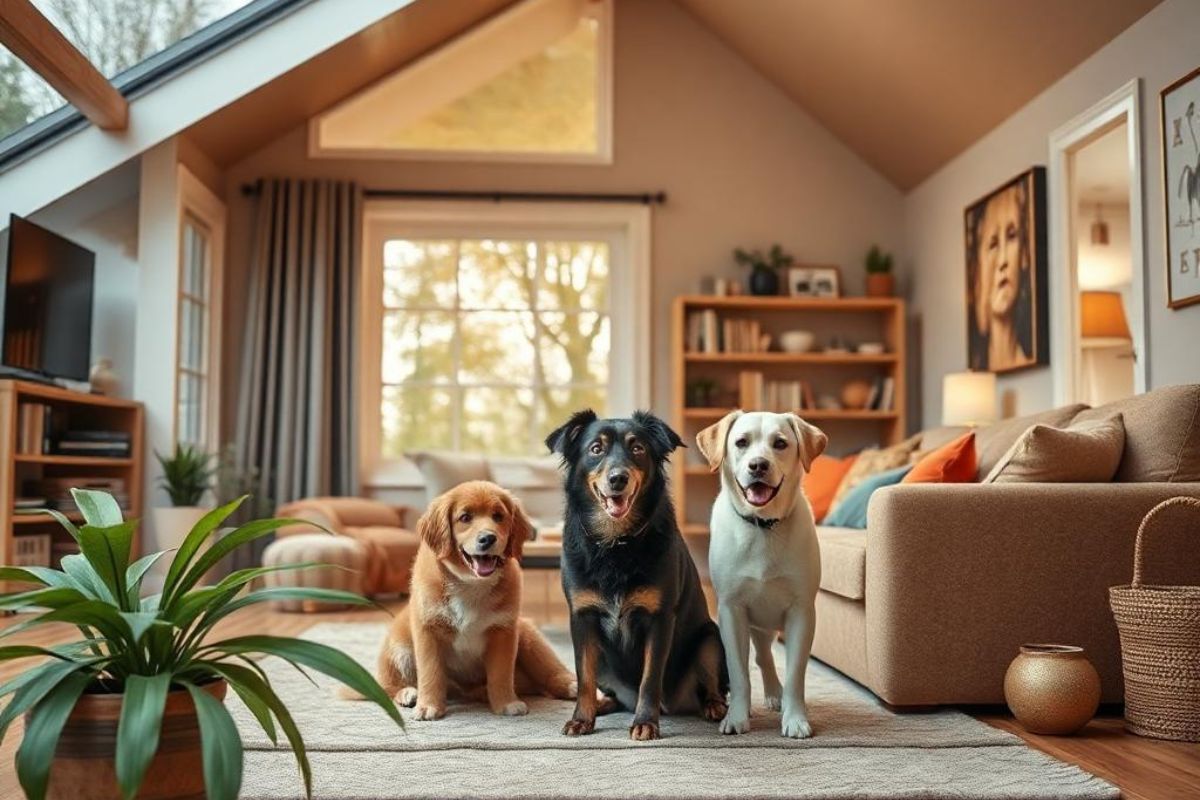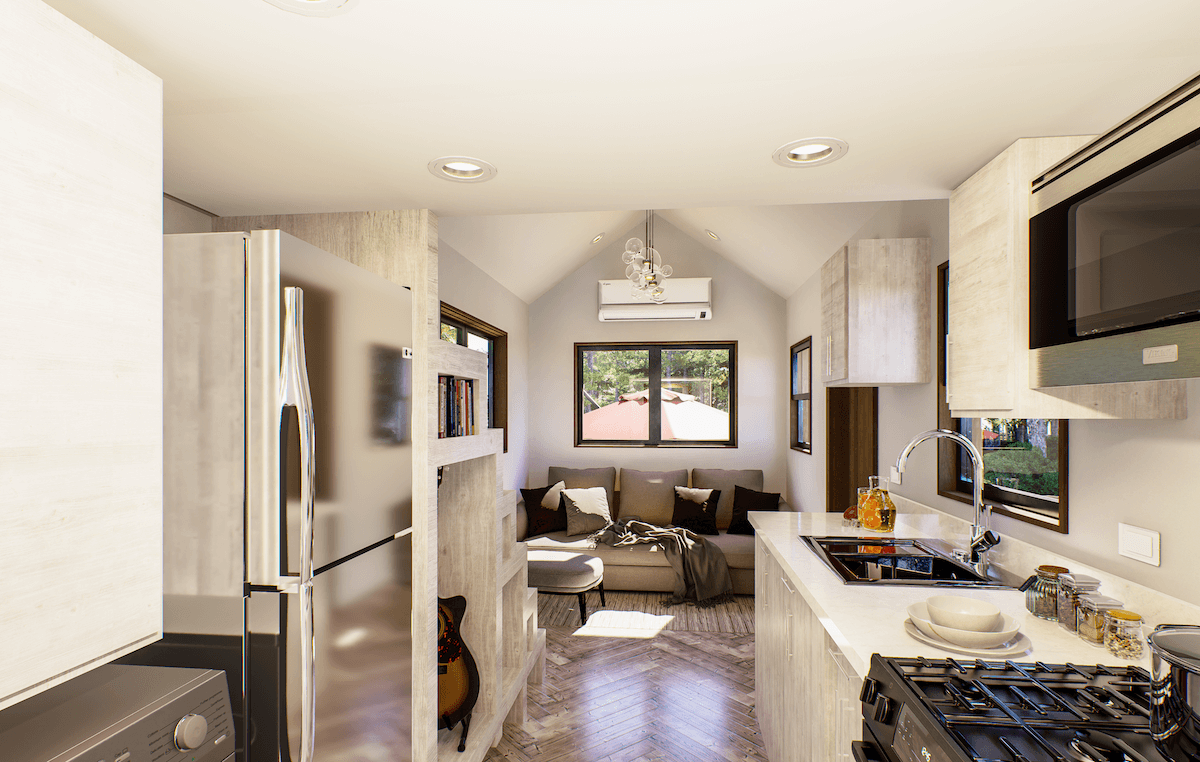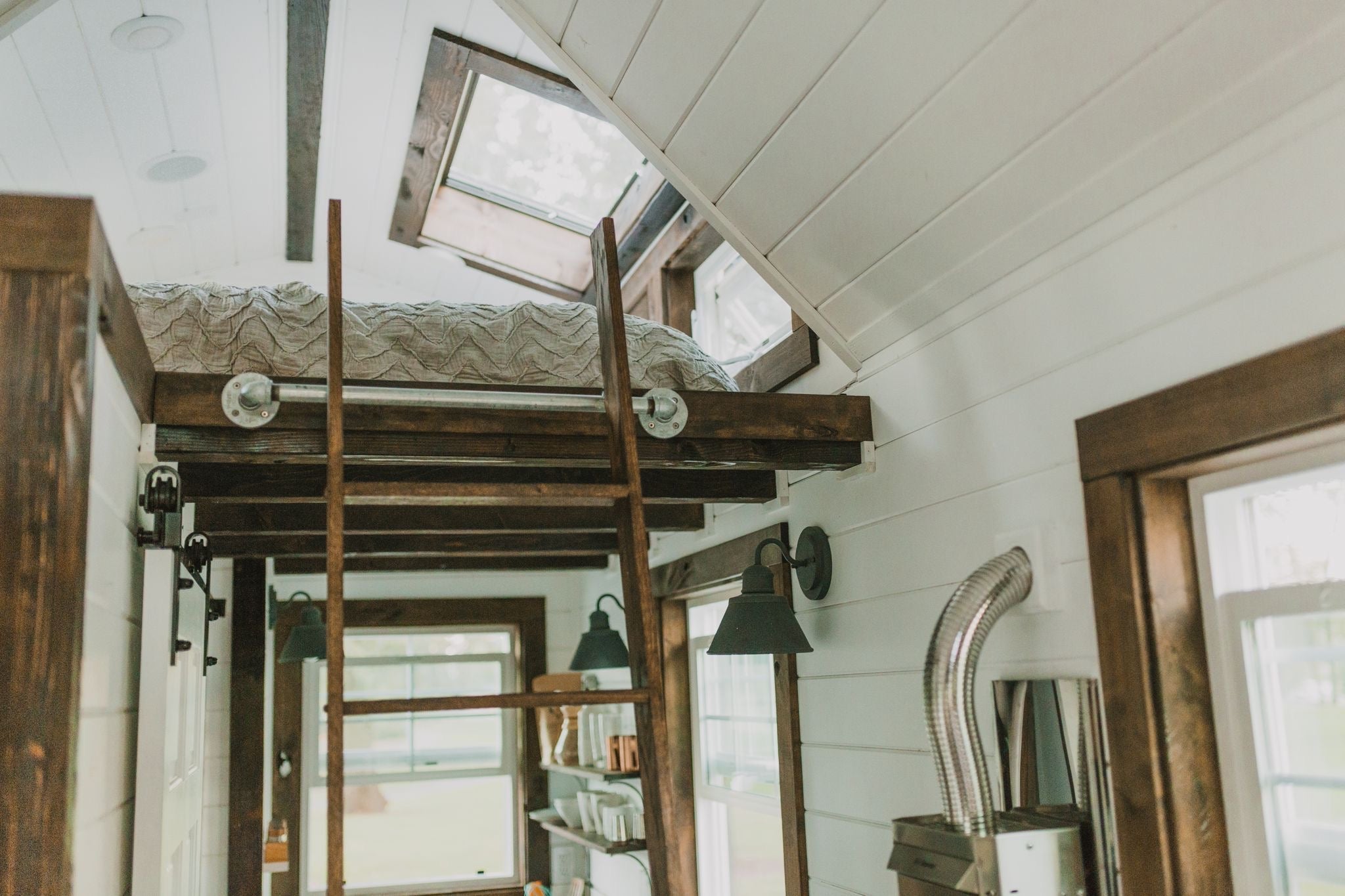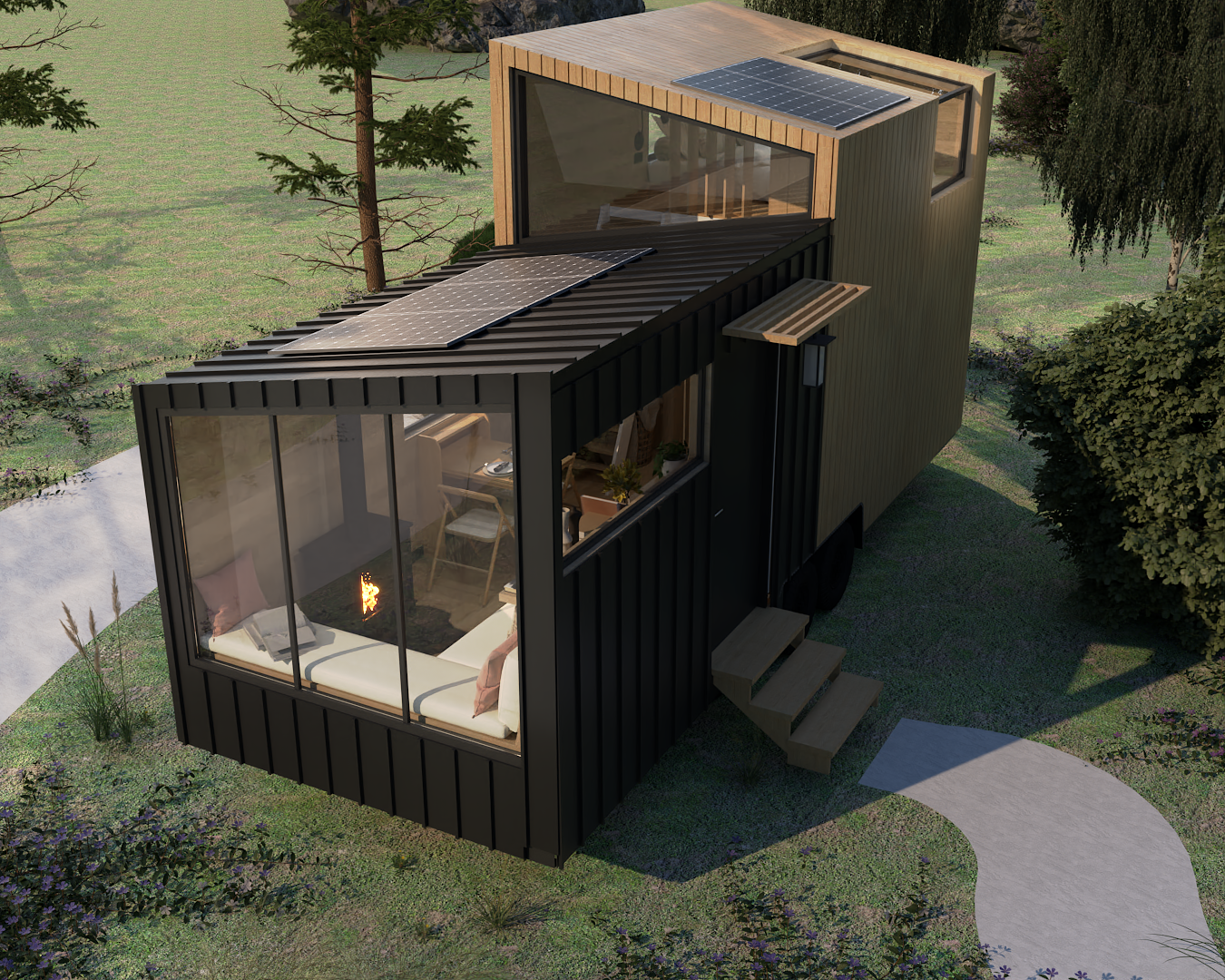Living in a tiny house with pets requires smart planning. Maximize space by using furniture that doubles as storage and position cozy beds in accessible corners. Install vertical structures like shelves or cat trees for play and relaxation.
Opt for furniture made of durable materials that resist scratches and stains. Encourage mental stimulation with puzzle feeders and interactive toys. Regular cleaning and pet-safe products guarantee hygiene. There's more to explore about creating a harmonious tiny home environment.
Key Takeaways
-
Select pet-friendly furniture that offers storage solutions and uses durable, easy-to-clean materials.
-
Incorporate vertical spaces like shelves or cat trees for pets to climb and explore.
-
Ensure pet beds are placed in cozy, accessible corners without obstructing pathways.
-
Use interactive toys and activities like puzzle feeders to engage pets mentally and physically.
-
Maintain cleanliness with routine cleaning, pet-safe products, and regular grooming to reduce shedding.
Designing Multi-Functional Spaces for Pets
When designing multi-functional spaces for pets in your tiny house, it is vital to balance practicality with comfort. You should consider your pet’s unique needs and behaviors.
Begin by selecting furniture that doubles as storage; a bench or ottoman can hide toys and supplies. Make certain your pet's bed is in an accessible, cozy corner that doesn't obstruct movement. Choose materials that are durable and easy to clean, such as microfiber or treated fabrics, to withstand wear and tear.
Incorporate feeding stations that blend seamlessly with your kitchen area, using pull-out drawers or foldable surfaces. By thoughtfully planning these spaces, you create a harmonious environment that supports your pet’s well-being, guaranteeing they feel at home even in compact living quarters.
Incorporating Vertical Space for Play and Relaxation
Enhancing your tiny house with multi-functional spaces for pets paves the way for maximizing vertical space, enriching your pet's environment for both play and relaxation.
Install wall-mounted shelves or cat trees that cater to your pet's climbing instincts. These structures provide exercise and mentally stimulating opportunities. Dogs can benefit too from vertical spaces; elevated platforms can serve as cozy observation points. Even small animals like birds or hamsters enjoy vertical habitats, which can mimic natural environments.
Ensure each level is secure and accessible. Use materials that are non-toxic and durable. Regularly inspect installations to maintain safety. By thoughtfully utilizing vertical space, you cater to your pets' innate behaviors, promoting a healthy, engaging lifestyle in your tiny home.

Selecting Pet-Friendly Furniture and Decor
Choosing pet-friendly furniture and decor is essential in creating a harmonious living environment in a tiny house. Prioritize materials that resist scratches, stains, and pet hair.
Opt for tightly woven fabrics, such as microfiber or leather, known for durability and easy cleaning. Consider furniture with rounded edges to prevent injuries during playful moments. Select decor items that are non-toxic and secure them to prevent accidental knocks. Use scientific insights into pet behavior to make informed choices; for instance, cats prefer elevated spaces, so incorporate shelves or cat trees.
Dogs benefit from soft, cozy corners where they can relax. Keep your pet's size in mind to guarantee furniture proportions suit their needs, promoting comfort and reducing stress in your compact home.
Creating Enrichment Activities in Limited Areas
Creating a harmonious living space isn't just about choosing the right furniture; it's also about guaranteeing your pets remain mentally and physically stimulated, even in confined quarters. You can maximize limited space by incorporating vertical structures like shelves or cat trees, offering your pets vertical exploration.
Puzzle feeders are excellent for engaging your pets' minds during mealtime, doubling as a tool for mental enrichment. Rotate toys regularly to keep curiosity piqued. For dogs, consider interactive play sessions with tug toys or short training exercises that reinforce positive behavior.
Introduce scent-based games using hidden treats, encouraging natural foraging instincts. By dedicating time to these activities, you guarantee your pets enjoy a fulfilling life, enhancing their overall well-being.

Maintaining Cleanliness and Hygiene in Tight Quarters
While living in a tiny house with pets, guaranteeing cleanliness and hygiene can seem intimidating, but it's essential for both your well-being and theirs.
Start with a routine cleaning schedule—daily sweeping and weekly deep cleaning prevent allergens and odors. Use pet-safe cleaning products to protect your furry friends from harmful chemicals. Regular grooming reduces shedding and dander, minimizing allergens.
Designate a specific area for litter boxes or pet beds, and clean them frequently to control bacteria and odors. Install air purifiers to improve air quality, as confined spaces trap pet dander and dust. Ascertain proper ventilation to reduce humidity and prevent mold growth. Keeping your small space tidy not only promotes health but also creates a harmonious environment for everyone.
Managing Pet Noise and Behavior in Close Proximity
Understanding how to manage pet noise and behavior in a tiny house is essential for maintaining a peaceful living environment. Start by observing your pet’s behavior patterns. Recognize triggers that cause excessive noise, such as anxiety or boredom. Providing mental stimulation through interactive toys can reduce disruptive behaviors.
Consider positive reinforcement techniques to encourage quiet behavior. Reward your pet when they remain calm. This scientifically-proven method strengthens desired actions. Also, establish a consistent routine. Pets thrive on predictability, which can decrease stress-induced noise.
Ensure your pet has a designated space to retreat when they need solitude. This helps manage overstimulation and promotes self-soothing. Remember, patience and understanding are key. With careful attention, you’ll create harmony in your compact home.

Planning Outdoor Adventures and Exercise Routines
When planning outdoor adventures and exercise routines for your pet in a tiny house setting, it's essential to contemplate both their physical and mental well-being. Start by evaluating your pet’s specific needs based on their breed, age, and health. Regular walks or jogs can help maintain their fitness, while interactive play like fetch or agility exercises enhances mental stimulation. Design a routine that varies in intensity to keep them engaged and prevent boredom.
Utilize local parks or pet-friendly trails to provide a change of scenery, which is critical for their sensory enrichment. Guarantee your pet’s safety with proper leashes or harnesses, and don’t forget hydration. Consistent, well-planned outdoor activities contribute greatly to your pet’s overall happiness and health.
Conclusion
In your tiny house, creating a content and healthy environment for your pets is entirely possible with thoughtful planning. By designing multi-functional spaces and utilizing vertical areas, you can maximize their comfort and play opportunities. Opt for pet-friendly furniture and incorporate enrichment activities to keep them engaged.
Maintain cleanliness diligently to guarantee a hygienic space. Address noise and behavior calmly, and plan outdoor adventures for physical exercise. With these strategies, you’re fostering a harmonious and happy home for your furry companions.






Share: